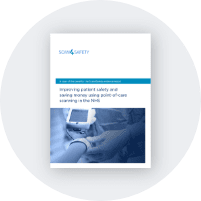

For Royal Papworth Hospital NHS Foundation Trust, interoperability became a key priority as part of their integration plans with neighbouring trust, Cambridge University Hospitals NHS Foundation Trust (CUH), to share a pathology service.
To make this happen successfully, they needed to have a process in place where they were able to link the systems at each trust, enabling clinicians to order tests and share patient information and pathology results in a timely manner. However, the system in place was extremely labour intensive, and relied heavily on manual data entry.
With increasing numbers of patients needing treatment at both hospitals, this process became progressively harder to manage, creating as much as 24 hour delays within the pathology.
As part of the integration project they created an interface between their own electronic patient record (EPR) system – Lorenzo, and CUH’s EPR system – Epic.
This enabled blood test orders and results to be shared between systems directly, enabling full automation of the pathology service.
Later, electronic prescribing medicines administration (EPMA) was also implemented as a component of the Lorenzo EPR programme. In doing so, any prescribing and administration information could then be automatically fed back into the patient record.

"The UK’s secretary of state for health and social care and the Wachter Review’s tech vision both say that interoperability is the way forward, and we have shown that to be correct. Standards and open systems are what really matter, and Royal Papworth is ahead of the curve. We have put policy about interoperability into practice – it is achievable. "
Through automation, clinicians then had access to results instantaneously saving an average of 24 hours each time by eliminating manual transcription, which also reduced the risk of transcription errors.
Using EPMA, meant staff spent less time completing admin tasks, saving £42,000 for the trust each year. Integrating the EPMA system with the EPR also allowed for conflict-based warnings to be generated instantly, alerting clinicians immediately to any potential drug safety alerts. Fewer missed doses were also reported on the trust incident reporting system.
Staff were able to use the system to help standardise and trace prescribing and administration activities, creating an audit trail that allowed for increased traceability and patient safety benefits saving over £50K for Royal Papworth in the first year.
The trust is embarking on a journey to become a GS1 exemplar site – becoming fully GS1 compliant across all key areas.
If you would like to submit a case study demonstrating how your trust has implemented GS1 standards, email us at healthcare.casestudies@gs1uk.org